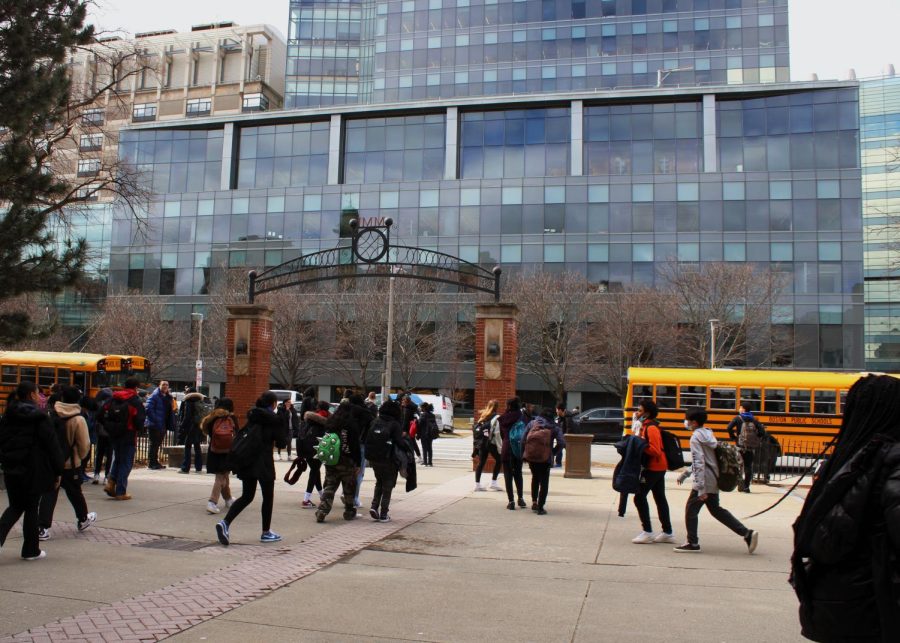City vs. Suburbs: Urban Kids For the Win
Why settle for a boring childhood in the suburbs when you can have an adventurous one in the city? It is widely acknowledged that people, especially children, are products of their environments. From rural areas to suburbs to the concrete jungle, growing up is a varied experience shaped by different circumstances. It is evident that kids who grow up in the city are far more independent and thus better equipped for adulthood.
Cities are fast-paced, busy and crowded environments, which, to some, may seem inopportune for raising children. An urban environment, however, fosters independence from a young age and instills valuable life skills, such as navigating public transportation and remaining safe while doing so.
Catherine Vu (III) explains, “Living in a city makes you very close to other people, work [and] shops. The suburbs isolate you from different services and people.” Children learn how to navigate interactions with service workers in stores, ask for help when necessary and spend money responsibly, an opportunity that is prematurely exposed to city kids.
Meanwhile, in the suburbs, younger kids are forced to rely on their parents to get from place to place due to the expansive nature of suburban towns. For working parents and their children, this presents a challenge, as kids struggle to move around and parents are forced to frequently rearrange their schedules based on when and where their children need to be driven.
In addition to mastering self-reliance, city kids are granted with opportunities across a range of fields and interests. This is visible in the sheer number of experiences accessible to Boston Latin School students, including summer jobs, internships and other programs that span from volunteering in hospitals to painting murals. Through these opportunities, students can network with a wide variety of people, a valuable experience that is primarily available in bustling and vibrant city environments.
These opportunities largely stem from cities, which are often diverse areas filled with people from many distinct backgrounds. Ita Berg (III) expresses, “I’ve met some of the people I respect and admire the most in Dorchester, and I am always grateful to live somewhere with many cultures, languages and foods. I think city-living, because of its diversity, produces children with more respect for other people than they might already have, and I think it teaches them to have open minds.” This greatly contrasts with the suburbs, which are often much more homogenous and financially exclusive, leading to closed-mindedness and a lack of exposure to people of different socioeconomic backgrounds.
While suburbs are known for being smaller and therefore more community-oriented as a result of residents who are more familiar with one another, people living in cities are stereotyped as colder and not as intimate. Despite such claims, this is often not the case. Instead, small communities within cities create more enriched environments that feature the diversity so unique to urban areas. Berg emphasizes, “Boston is full of diverse and wonderful neighborhoods, which means you can always find somewhere fun to go and experience many different cultures in one area”
A counterargument to raising children in the city is that it is more dangerous, in consideration of crime rates. The National Bureau of Economic Research, however, disagrees, elaborating on how “the connection between cities and crime is both so strong in the [United States], and so much a part of our history that it becomes almost impossible to remember that in many times and in many places cities are places of safety, not of danger.”
Often, these beliefs are rooted in systemic prejudices against people of color, people with disabilities and people in other marginalized communities. Referring to these cities as dangerous is merely an attempt at justifying not only the biases against marginalized communities, but also the insufficient support for the area, perpetuating the issue.
Everyone has individual definitions for what an ideal home should look like. Some prefer the energetic buzz of city life, while others crave the tranquility of a roomy, suburban abode. From endless opportunities and diverse communities to a valuable set of life skills, urban environments provide the ideal foundation for young people to thrive and grow into well-rounded adults.







